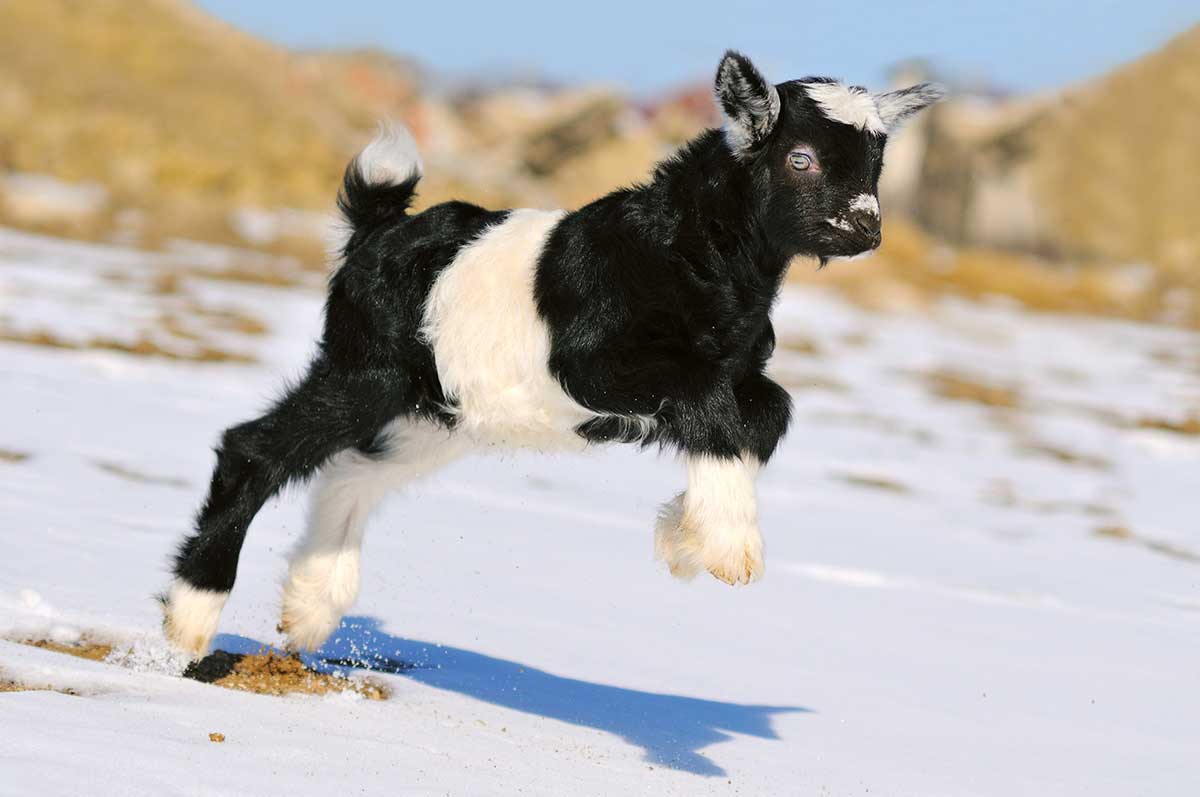
What temperature is too cold for goats?
Goats are quite hardy and enjoy the cooler temperatures as winter approaches. But they still need a helping "hoof" when temperatures drop closer to freezing. Before the snow falls, you want to make sure you have a sturdy shelter, extra food and a reliable deicer ready to go. This guide will help you keep your fuzzy goats toasty and cozy as the temperature drops.

Goats Need Extra Help as the Temperature Drops
All livestock have an outdoor temperature range they prefer that doesn't require excess metabolic energy to maintain their temperature. This is called a "thermal neutral zone" (or a thermoneutral zone). For goats, the range tends to fall between 54 to 75°F (though some sources put this a little lower, at 50 to 68 degrees). Livestock also have a lower critical temperature that marks the point where they need extra rations and help maintaining their natural body heat. For goats, this is 32°F. However, if their coat is wet, that threshold can rise to 58 degrees.
In fact, winter winds at 5 miles per hour or higher, rain and ice can all raise the threshold. This means your goats will need a little extra help from you long before the temperature reaches freezing. That's why it's important to be ready for the winter as soon as the temperatures start to drop.
You also want to keep an eye out for any signs of cold weather stress in your goats. This can include shivering, teeth grinding, huddling together, walking less in your pastures or eating more.
Provide Shelter from the Winter Weather
Your first step in protecting your goats as the temperature drops should be to make sure they have a sturdy winter-proof shelter. Ewes need 12 to 15 square feet of shelter per goat, while rams need 15 to 20 square feet each. And placing the shelter on higher ground can reduce flooding concerns.
You don't have to make the shelters very complicated. Because goats need a lot of ventilation for their health, a three-sided shelter can work well if it opens to the south so it blocks northerly winds. And you won't have to herd your goats to your shelter. When it gets cold, they instinctively know to seek it out.
Help Keep Your Goats Warm
Another way to keep your goats warm is by heating their shelter. This is important for all goats, but especially for kids born later in the season that still can't regulate their temperature well.
Hay stacks and wind fences can help cut down the bitter chill. If you use heat lamps, make sure they are out of the animals' reach. And be sure to provide a deep layer of straw or grass hay they can nestle into to stay warm while they sleep. Assess the bedding in the shelter regularly for mold and other issues, and replace the bedding periodically to ensure good air quality and comfort in the shelter.
Increase Your Goats' Feed in the Winter
When it gets cold, it's time to feed your goat more. Not only should you make sure there's more food available overall (including access to better-quality forage), but you also want to increase grain rations and use second-cutting instead of first-cutting hay. If you rely on foraging, keep an eye on the forage conditions so you know when it's time to supplement it.
For every 10 degrees the temperature drops below a goat's lower critical temperature, add an extra quarter pound of grain to the feed rations. But watch your herd closely to make sure they don't start gaining weight.
Make Sure Your Goats' Water Doesn't Ice Over
While you're increasing your goats' feed, don't forget to keep a close eye on their water sources too. You should check their water at least twice a day to make sure nothing's icing up.
If you're using buckets to water your goats, consider one of these options:
K&H Perfect Bucket Heater. This low-wattage heater keeps water ice-free in plastic or metal buckets up to 16 gallons in size.
K&H Ultimate Bucket Heater with Cord Clip. This 250-watt deicer must be submerged when used. It will automatically turn on and off as needed to keep your stock tanks or buckets from freezing.K&H Ultimate Stock Tank Deicer. This deicer comes in 250- to 1,500-watt sizes and is thermostatically controlled to turn on and off as needed. It can be used as a floating or submersible deicer and is safe for all stock tanks. Use the K&H Zone Chart to determine what wattage you need.
K&H Universal Waterer Deicer. This is thermostatically controlled to keep water thawed and drinkable. It works with aluminum and plastic Poultry Waterers, dog bowls, buckets or other water receptacles. The bottom is sealed to prevent unwanted pests from nesting.

To make sure your hose stays ice-free as well, get the K&H Thermo-Hose Outdoor Heated Hose, which comes in 20- to 60-foot sizes. It turns itself off in warmer weather and doesn't need to be drained between uses. This hose is great for filling stock tanks and ponds and for general use around your barn.
Plan Ahead to Keep Your Goats Warm in the Winter
Keeping your goats safe and warm in the winter requires a little planning, from setting up a sturdy, warm and well-ventilated shelter to ensuring their water doesn't ice over. And following these steps will keep your goats toasty and happy even when winds get cold and snow starts to fall.



